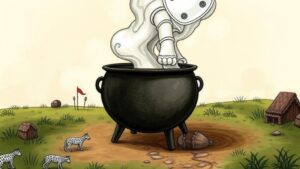The life of an explorer chasing clues from cryptic maps to desert ruins.
The Life of an Explorer Chasing Clues from Cryptic Maps to Desert Ruins
Exploration has captivated the human spirit for centuries, and few pursuits embody this adventure more than the life of an explorer chasing clues from cryptic maps to desert ruins. This article delves into the exhilarating journey that many adventurers embark upon, highlighting notable explorers, the significance of their findings, and the broader implications of their work.
The Allure of Exploration
Exploration allows individuals to traverse uncharted territories and uncover secrets that have remained hidden for centuries. The mystery behind cryptic maps adds an extra layer of intrigue, often hinting at treasures, lost civilizations, or ancient knowledge. Many explorers dedicate their lives to deciphering these maps, which often feature symbols and references lost in time.
Throughout history, numerous explorers have made significant contributions by piecing together clues from cryptic maps. Some notable figures include:
- Hiram Bingham: Best known for bringing Machu Picchu to the world in 1911, Bingham was inspired by maps and local legends that hinted at the existence of an Incan citadel hidden in the Andes.
- Howard Carter: In 1922, Carter discovered the tomb of Tutankhamun in the Valley of the Kings. His findings were influenced by earlier maps and archaeological clues that pointed to potential find spots.
- David Livingstone: His expeditions in Africa during the 19th century were guided by regional maps and a desire to discover the source of the Nile, leading to significant geographical and cultural insights.
The Role of Cryptic Maps
Cryptic maps are often centuries old and serve various purposes, from showcasing trade routes to marking sacred locations. reflect the knowledge and artistic interpretation of the time. For example, the Vinland Map, believed to date back to the 15th century, purportedly charts a Viking route to North America, suggesting that Norse explorers arrived long before Columbus. But, its authenticity has been debated among scholars, demonstrating the importance of thorough analysis in deciphering historical maps.
Desert Ruins: A Treasure Trove of History
Desert ruins are particularly alluring to explorers, as they often contain remnants of ancient civilizations. vast sands hide invaluable treasures and architectural wonders. For example, the ancient city of Petra in Jordan, carved into rose-red cliffs, serves as a testament to the ingenuity of the Nabataeans. Its intricate water conduit system illustrates advanced engineering techniques that have fascinated archaeologists since its rediscovery in the early 19th century.
Challenges Faced by Explorers
The path of an explorer is fraught with challenges, from the physical hardships of navigating harsh terrains to the intellectual hurdles of interpreting historical data accurately. Key challenges include:
- Environmental Hazards: From extreme temperatures to the risk of sandstorms, explorers must be prepared for the uncertainties of the desert’s climate.
- Resource Limitations: Access to food, water, and equipment can be scarce in remote areas, necessitating careful planning and logistics.
- Interpretative Errors: Misjudging the symbols on a cryptic map can lead to fruitless searches, highlighting the importance of working with expert historians and archaeologists.
Real-World Applications of Exploration
The findings of explorers have real-world implications, including advancements in historical knowledge, cultural understanding, and even tourism. The unearthing of ancient ruins has led to:
- Cultural Preservation: Discoveries help preserve the history and traditions of ancient civilizations, fostering a greater appreciation for cultural heritage.
- Tourism Growth: Significant archaeological sites often attract tourists, which can boost local economies and contribute to conservation efforts.
- Educational Opportunities: Explorations can provide invaluable educational resources for future generations, from textbooks to documentaries that inspire further inquiry into history.
Actionable Takeaways for Aspiring Explorers
For those drawn to the life of exploration, here are some actionable steps to consider:
- Study Historical Cartography: Understanding maps and their histories is crucial for interpreting clues effectively. Courses in geography or archaeology can be beneficial.
- Engage in Fieldwork: Practical experience is invaluable. Seek out local archaeological digs or collaborate with institutions dedicated to exploration.
- Develop Skills for Survival: Knowledge of survival skills can be essential in remote areas; consider outdoor survival training or wilderness exploration courses.
To wrap up, the life of an explorer chasing clues from cryptic maps to desert ruins is a thrilling pursuit marked by history, adventure, and discovery. While it comes with its challenges, the knowledge gained and the stories unearthed can have profound implications for our understanding of the world and its past. Whether you wish to follow in the footsteps of great explorers or simply dream of adventure, the allure of exploration remains an enduring spirit of human curiosity.



